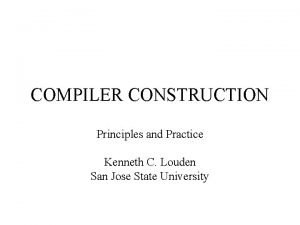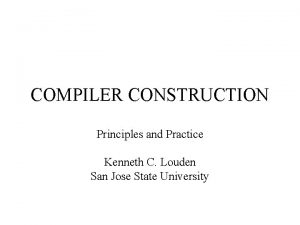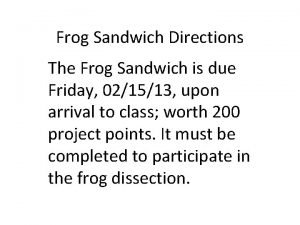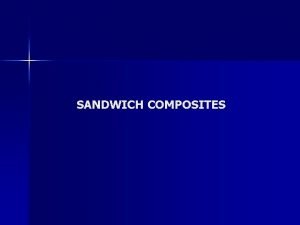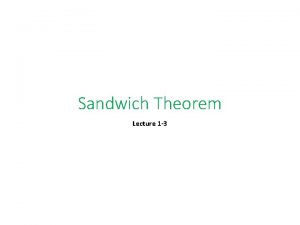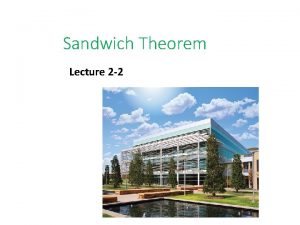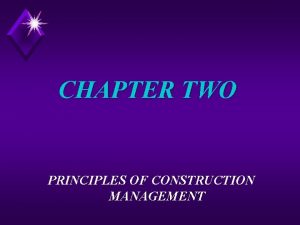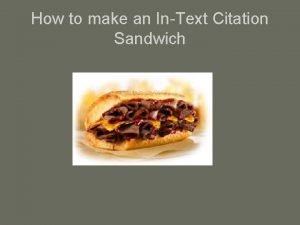SANDWICH CONSTRUCTION PRINCIPLES OF SANDWICH CONSTRUCTION 1 Two









- Slides: 9

SANDWICH CONSTRUCTION PRINCIPLES OF SANDWICH CONSTRUCTION 1. Two facings, which are relatively thin and of high strength, 1. a core is enclosed which is relatively thick and light and which has adequate stiffness in a direction normal to the faces of the panel. Many alternative forms of sandwich construction may be obtained by combining different facing and core materials. The facings may be steel, aluminium, wood, fibre-reinforced plastic or even concrete. The core may be made of cork, balsa wood, rubber, solid plastic material (polyethylene), rigid foam material (polyurethane, polystyrene, phenolic foam), mineral wool slabs or from honeycombs of metal or even paper.

a) panel with a polyurethane or polystyrene core b) panel with a metal or paper honeycomb core c) panel with a mineral wool core

For a symmetric sandwich section with a low modulus core, the bending stiffness and the bending stiffness-to-weight rato are given by where, Es = modulus of the skin material, Ρs = density of the skin material, b = width of the section, t = thickness of the skins and d = distance between the skins. Steel–polymer–steel and aluminum–polymer–aluminum are two commercially available sandwich materials developed for body structures as well as for body panels. Sandwich panels with carbon fiber reinforced polymer in the skins and a polymer foam core can provide much higher weight saving opportunity for body applications.


SANDWICH MATERIALS • vibration damping group • lightweight construction The inner and outer skins typically consist of five or seven layers of various material thickness and type, dependent on the specific strength required at different locations, and optimized by finite element analysis. The actual form of the body panel material is essentially a sandwich of aluminium honeycomb between layers of multi-ply carbon fibre reinforced resin.

SEQUENTIAL CO-INJECTION OR SANDWICH MOLDING Each of the five parts comprises a rigid polyurethane foam core of 110 kg/m 3 density. Glass-fibre mat is preformed and wrapped around the foam core before being placed into the low pressure injection tool. To ensure accurate location, the glass mat is retained in the part line of the tool. Polyester resin is then injected into the tool which impregnates the glass fiber and completes the sandwich construction.


ADVANTAGES • lightweight nature of thermoplastic core • stiffness, • corrosion resistance • surface appearance of the metallic outer layers.

DISADVANTAGES • this material type is only viable for components that are assembled into the body after the painting process • this material is not weldable and must be assembled by a cold joining process of either adhesive bonding or mechanical fastening.
 The filling is the of the sandwich
The filling is the of the sandwich Principle of curriculum construction
Principle of curriculum construction What are the defects of present curriculum
What are the defects of present curriculum Kenneth c. louden
Kenneth c. louden Compiler
Compiler Fundamental principles of ship construction
Fundamental principles of ship construction Principles of marketing distribution channels
Principles of marketing distribution channels Two nonadjacent angles formed by two intersecting lines
Two nonadjacent angles formed by two intersecting lines Two hands go clap clap clap
Two hands go clap clap clap Osha 1910-134
Osha 1910-134



